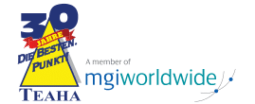Noise exposure is one of the most common causes of hearing loss among European workers, consistently ranking among the top ten reported occupational diseases. Romania is no exception. Directive 2003/10/EC, which has been transposed into national law, sets clear exposure limits and requires employers to take a series of measures to protect employees’ hearing health.
These obligations cover all areas of activity, not just industrial sectors. Even apparently quiet spaces – nurseries, offices, commercial premises – can exceed the action thresholds. Employers need to be aware that they alone are responsible for assessing and managing noise-related risks in the workplace.
Noise exposure limits: what the law says
According to Directive 2003/10/EC and national rules, there are three key thresholds in noise assessment:
- Exposure limit value – LEX,8h = 87 dB(A) and peak sound pressure ρpeak = 200 Pa
These values must not be exceeded under any circumstances. If the noise level exceeds these limits, the employer is obliged to take immediate action, including stopping work and reconfiguring the workspace.
- Upper exposure action values – LEX,8h = 85 dB(A) and ρpeak = 140 Pa
If these values are reached, the employer must:
o implement a programme of technical and organisational measures to reduce exposure;
o provide compulsory hearing protection;
o carry out specialist medical checks;
o mark noisy areas and restrict unauthorised access.
3 Lower exposure action values – LEX,8h = 80 dB(A) and ρpeak = 112 Pa
At this level:
o the employer must inform and train employees;
o hearing protection must be provided (even if their use is not compulsory);
o a preventive audiometric control is recommended.
All values are calculated as weighted averages for an 8-hour working day and should be adjusted if the programme is longer or shorter.
What concrete steps to take
Employers should start with a noise risk assessment. This should be carried out by a specialist and take into account:
- level, duration and type of exposure;
- interaction with other hazards (vibration, ototoxic chemicals);
- information on noise emissions from equipment;
- Vulnerable groups (young workers, pregnant women, etc.).
Based on the assessment, preventive measures are applied:
- use of quieter equipment;
- designing the space to isolate noise sources;
- maintenance of equipment to minimise operating noise;
- organising working time to reduce the duration of exposure.
Consequences of neglecting noise risk
Non-compliance can lead not only to fines, but also to damage to workers’ health, legal action, loss of staff qualifications or difficulties in recruitment. Hearing loss is irreversible and has a major impact on quality of life and ability to work.
The EU directive and guidelines encourage employers to take a proactive approach, based on prevention and education. It is important that workers are involved in identifying the problems and understand how they can contribute to reducing the risks.
Conclusion
Noise is an invisible but devastating risk. Employers must treat noise exposure as seriously as any other occupational hazard. Regular assessment, technical measures, training and health checks are not just legal obligations – they are part of a healthy organisational culture.
With the support of occupational health and safety specialists, employers can implement effective solutions, tailored to the specifics of each workplace, avoiding sanctions and protecting employees’ health.

